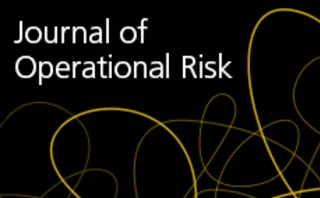Copulas
Impact of D-vine structure on risk estimation
In this paper, a sensitivity analysis using pair–copula decomposition of multivariate dependency models is performed on estimates of value-at-risk (VaR) and conditional value-at-risk (CVaR).
International and temporal diversifications: the best of both worlds?
In this paper, the authors focus on seven stock market indexes: two US, three European, one emerging and one Japanese. They select different pairs of markets and, with the help of wavelets, decompose these series at different timescales.
Tail dependence in small samples: from theory to practice
In this paper, the authors study tail dependence by defining the conditions required for all the methods used to perform and to quantify their efficiency and accuracy.
Model risk in the Fundamental Review of the Trading Book: the case of the Default Risk Charge
This paper assesses the model risk associated with the copula choice for the calculation of the Default Risk Charge (DRC) measure.
A copula approach to credit valuation adjustment for swaps under wrong-way risk
This paper deals with the credit valuation adjustment (CVA) of interest rate swap (IRS) contracts in the presence of an adverse dependence between the default time and interest rates: so-called wrong-way risk (WWR).
A latent variable credit risk model comprising nonlinear dependencies in a sector framework with a stochastically dependent loss given default
This paper proposes a latent variable credit risk model for large loan portfolios. It employs the concept of nested Archimedean copulas to account for both a sector-type dependence structure and a copula-dependent stochastic loss given default (LGD).
A vine copula–GARCH approach to corporate exposure management
This paper applies vine copulas with GARCH marginals to the problem of capturing asset dependence and tail dynamics for currency and commodity exposures commonly found in portfolios of global corporates.
Extremely (un)likely: a plausibility approach to stress testing
CCP’s risk managers propose a framework for generating extreme but plausible stress scenarios
Initial margin estimations for credit default swap portfolios
This paper presents a clearinghouse framework to establish initial margin requirements for portfolios of credit default swap instruments.
The benefit of using random matrix theory to fit high-dimensional t-copulas
This paper uses simulation studies and an example of operational risk modeling to show the necessity and benefit of using RMT to fit high-dimensional t-copulas in risk modeling.
Path-consistent wrong-way risk: a structural model approach
The author of this paper presents a general and path-consistent wrong-way risk (WWR) model that does not require simulation of credit and market variables simultaneously.
Impact of nonstationarity on estimating and modeling empirical copulas of daily stock returns
This paper investigates the extent to which the nonstationarity of financial time series affects both the estimation and the modeling of empirical copulas.
Value-at-risk bounds for multivariate heavy tailed distribution: an application to the Glosten–Jagannathan–Runkle generalized autoregressive conditional heteroscedasticity model
This paper aims to derive VaR bounds for the portfolios of possibly dependent financial assets for heavy tailed Glosten–Jagannathan–Runkle generalized autoregressive conditional heteroscedasticity processes using extreme value theory copulas.
Even for me, AMA models are too complicated
The AMA doesn’t make any sense – but the idea of a single, simple equation does, writes Ruben Cohen
Comparing risk measures when aggregating market risk and credit risk using different copulas
The authors of this paper simulate realistic total bank return distributions by means of a top-down copula approach for different parameter settings.
Risk management for return enhancement
Lundin and Satchell present a non-linear asymmetric dependence method between two assets
Stress testing in non-normal markets via entropy pooling
Ardia and Meucci introduce a parametric entropy pooling approach to portfolios stress testing
Full capital structures allow revival of synthetic CDOs
Managed deals could be next, but market's potential is expected to be limited
Cutting edge intro: Righting wrong-way risk
Models that describe wrong-way risk should move away from simplistic copula models, critics say.
Path-consistent wrong-way risk
A copula-based model for wrong way risk
Cutting edge intro: CDOs and the risk of risk aversion
New analysis shows CDOs can withstand high levels of correlation – what they can’t cope with, though, is a sudden change in risk appetite













